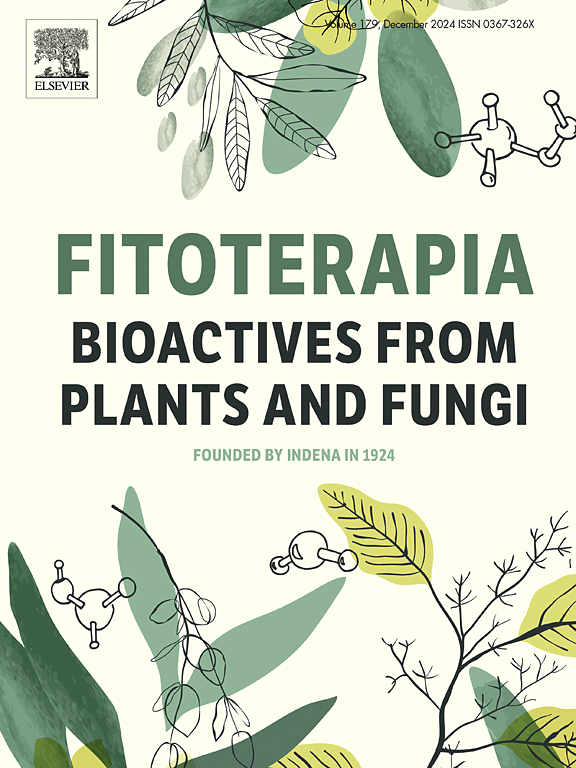Multi-platform comparison and phytochemical insights of Tripleurospermum taxa from Greece
IF 2.5
3区 医学
Q3 CHEMISTRY, MEDICINAL
引用次数: 0
Abstract
The Tripleurospermum (L.) Sch.Bip, (Asteraceae) genus, comprises 30 to 40 species widely spread in the northern hemisphere, and across the Mediterranean region. Out of the seven taxa encountered in Greece, four can only be found in specific areas, with limited spread throughout the country. The current work describes the phytochemical investigation, using modern analytical techniques, of the differences between the aerial parts of T. tempskyanum and T. rosellum collected from two floristic regions of Greece (Lesvos isl. and Mt. Parnon) and the common chamomile (Matricaria recutita). GC–MS was first applied for the analysis of the essential oils and dichloromethane extracts, significantly differentiating M. recutita from the Tripleurospermum taxa. Afterwards, a fractionation of T. tempskyanum ‘s non-polar and polar extracts afforded their major compounds, thus assisting to the unambiguous distinction of different isomers of matricaria lactone, as well as the first-time isolation of demethyl brevisnosideyne. Finally, the polar extracts were analyzed by means of UPLC–Orbitrap–HRMS/MS, revealing similarities among the species, with profiles dominated by cinnamic and flavonoid derivatives and fatty acids, with quantitative differences being observed for specific groups of compounds. Overall, the current study provides novel insight on the phytochemical differentiation between the studied genera and species.

希腊三种植物分类群的多平台比较及其植物化学意义。
三胸精(L.)(菊科)属,由30 - 40种组成,广泛分布于北半球和地中海地区。在希腊遇到的七种分类群中,有四种只能在特定地区找到,在全国范围内的分布有限。目前的工作描述了利用现代分析技术对从希腊莱斯沃斯岛(Lesvos isl)两个植物区收集的T. tempskyanum和T. rosellum的地上部分之间的差异进行的植物化学调查。和帕农山)和常见的洋甘菊(洋甘菊)。首次应用气相色谱-质谱联用技术对其挥发油和二氯甲烷提取物进行了分析,明确了其与三胸精属植物的区别。随后,对金盏花的非极性和极性提取物进行了分离,得到了它们的主要化合物,从而有助于明确区分金盏花内酯的不同异构体,并首次分离出去甲基灯盏花苷。最后,利用UPLC-Orbitrap-HRMS/MS对极性提取物进行分析,发现物种间具有相似性,以肉桂类衍生物、类黄酮衍生物和脂肪酸为主,特定基团的化合物存在定量差异。总的来说,本研究为所研究的属和种之间的植物化学分化提供了新的见解。
本文章由计算机程序翻译,如有差异,请以英文原文为准。
求助全文
约1分钟内获得全文
求助全文
来源期刊

Fitoterapia
医学-药学
CiteScore
5.80
自引率
2.90%
发文量
198
审稿时长
1.5 months
期刊介绍:
Fitoterapia is a Journal dedicated to medicinal plants and to bioactive natural products of plant origin. It publishes original contributions in seven major areas:
1. Characterization of active ingredients of medicinal plants
2. Development of standardization method for bioactive plant extracts and natural products
3. Identification of bioactivity in plant extracts
4. Identification of targets and mechanism of activity of plant extracts
5. Production and genomic characterization of medicinal plants biomass
6. Chemistry and biochemistry of bioactive natural products of plant origin
7. Critical reviews of the historical, clinical and legal status of medicinal plants, and accounts on topical issues.
 求助内容:
求助内容: 应助结果提醒方式:
应助结果提醒方式:


